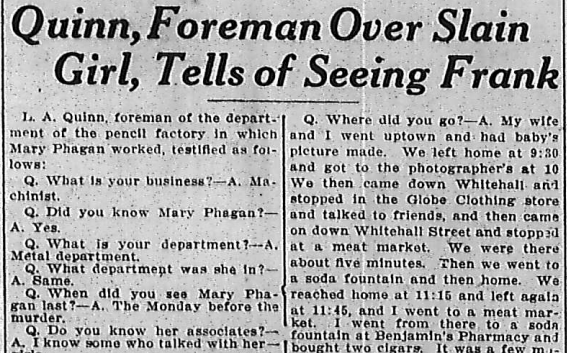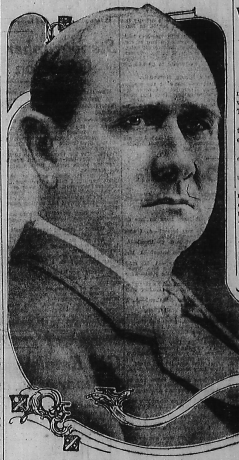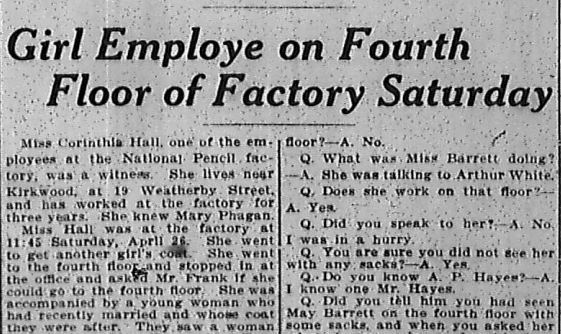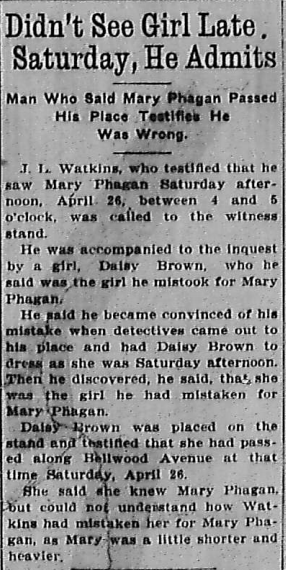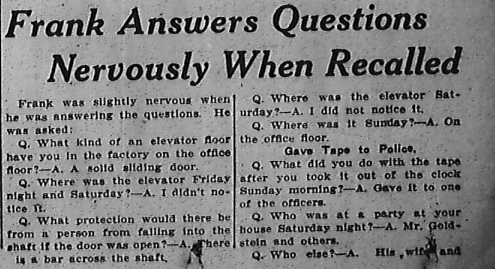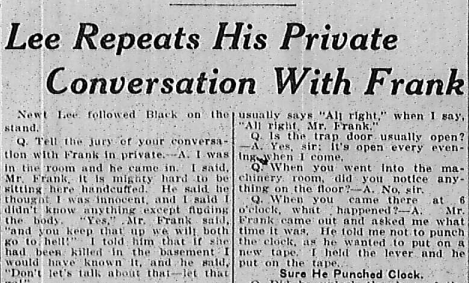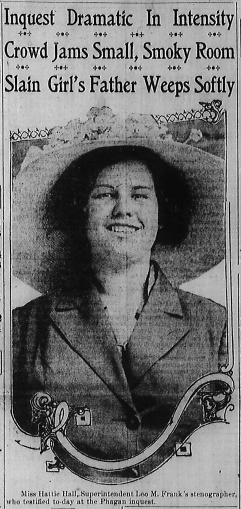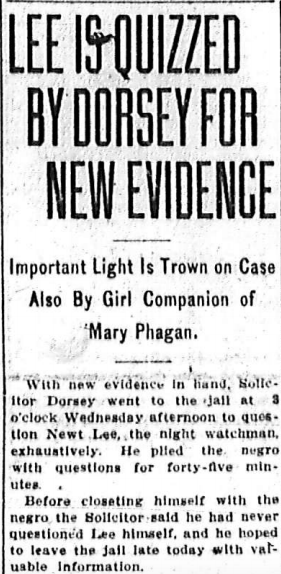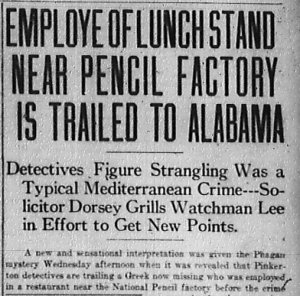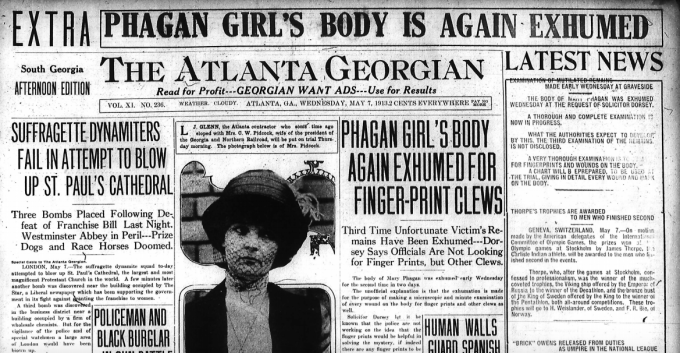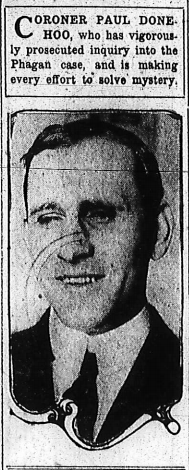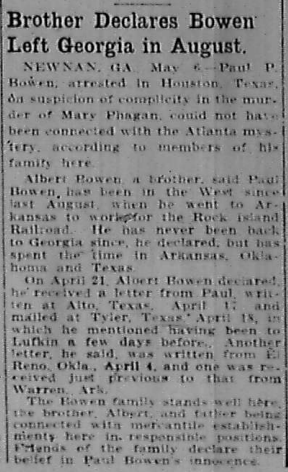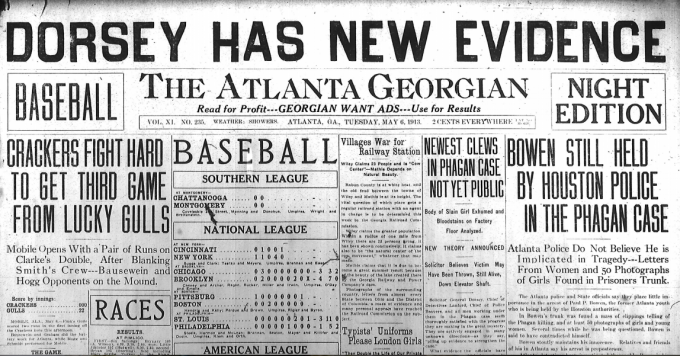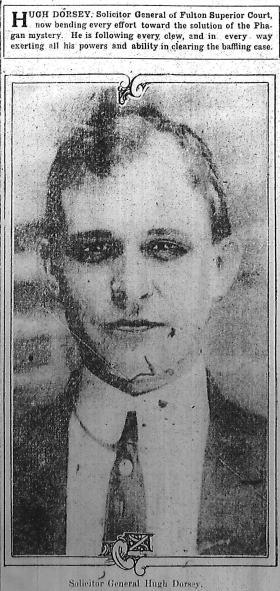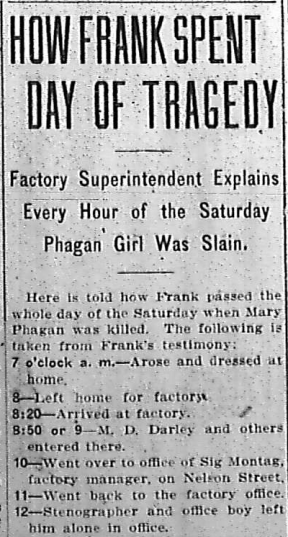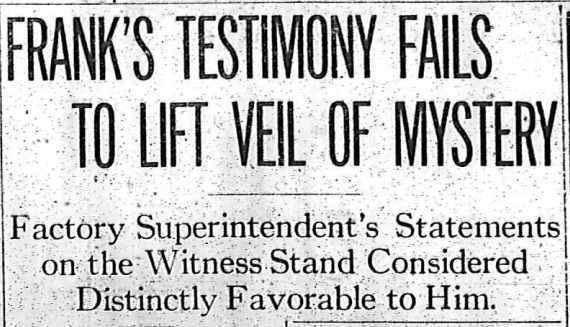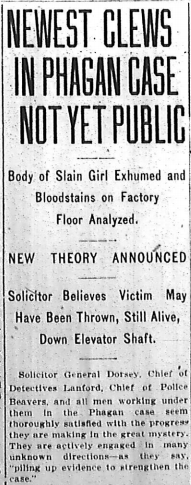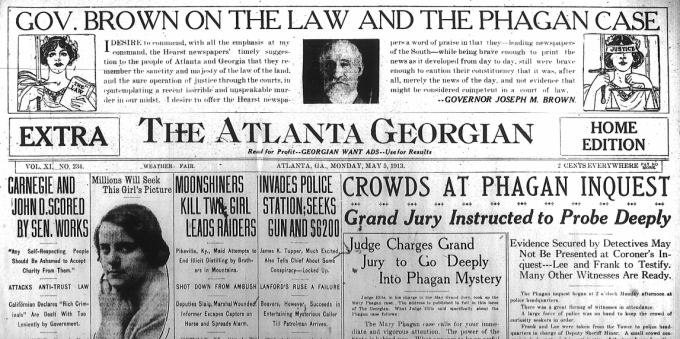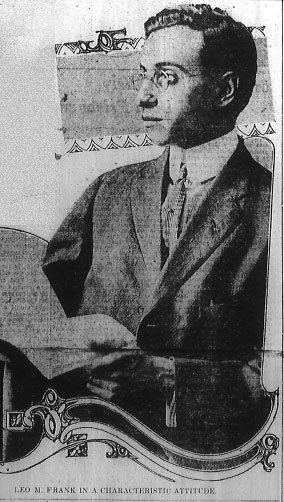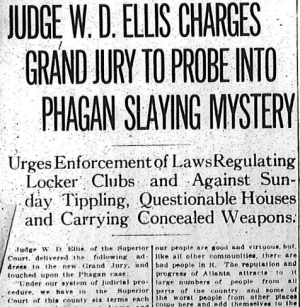Another in our series of new transcriptions of contemporary articles on the Leo Frank case.
Atlanta Georgian
Thursday, May 8th, 1913
L. A. Quinn, foreman of the department of the pencil factory in which Mary Phagan worked, testified as follows:
Q. What is your business?—A. Machinist.
Q. Did you know Mary Phagan?—A. Yes.
Q. What is your department?—A. Metal department.
Q. What department was she in?—A. Same.
Q. When did you see Mary Phagan last?—A. The Monday before the murder.
Q. Do you know her associates?—A. I know some who talked with her—girls.
Q. Any boys in that department?—A. Henry Smith and John Ramey.
Q. Were they thrown together?—A. All were working in the same room.
Q. When did you leave the factory?—A. Friday. Continue Reading →

